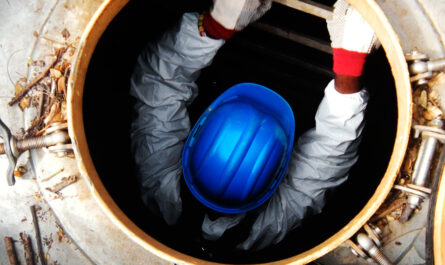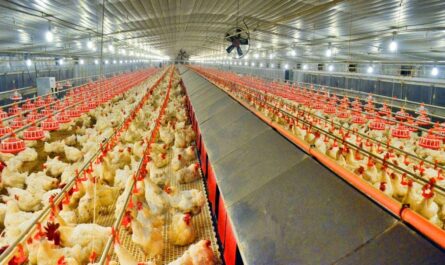Intelligent Pigging: A breakthrough technology for pipeline inspection and maintenance
Introduction to Pigging
Pigging refers to the process of using devices called pigs to perform maintenance tasks on pipelines that transport liquids and gases without stopping the flow process. Some common pigging operations include separating batches of products, removing liquids and slurries from pipelines, cleaning, and inspecting the interior surface of pipelines for defects or anomalies. Over the years, pigging has become an essential part of pipeline integrity management and is widely used across oil and gas pipelines, water pipelines, and petrochemical transportation.
Emergence of Intelligent Pigs
While conventional pigs help perform basic functions like separating fluids and cleaning pipelines, they have limitations when it comes to detailed inspection tasks. To overcome these limitations and enable advanced internal inspection, a new generation of sophisticated pigs called ‘intelligent pigs’ or ‘smart pigs’ emerged in the 1970s. Intelligent pigs are equipped with electronic sensors and data transmission capabilities that allow them to perform detailed inspection of pipelines and detect various anomalies in real-time. Some of the key capabilities of intelligent pigs include geometry assessment, crack and corrosion detection, material characterization, and mapping of pipeline route and location of welds and valves. Their inspection results can be monitored remotely to gather crucial pipeline condition data without stopping flow or digging up the ground.
Types of Intelligent Pigs
There are various types of intelligent pigs designed for specific inspection needs:
– Magnetic Flux Leakage (MFL) pigs – Use arrays of magnetic sensors to detect metal-loss corrosion and other defects by measuring distortions in the pipelines’ magnetic field.
– Ultrasonic pigs – Employ multiple ultrasonic transmitters and receivers to produce C-scan and B-scan images of pipe walls and detect wall thinning issues and cracks.
– Caliper pigs – Measure the internal geometry and ovality of pipelines using an articulated mechanical caliper arm. Help evaluate dent detection and ovality issues.
– Crack and integrated tools – Advanced tools that employ techniques like ultrasonics and MFL to effectively detect and characterize cracks, including stress corrosion cracks.
– Combination pigs – Multi-technology pigs equipped with several sensor types for comprehensive inline inspections capable of simultaneously detecting multiple defect types.
Critical Role of Intelligent Pigging in Pipeline Integrity
Pipelines face various internal and external corrosion threats over extended periods of operation under harsh conditions. Issues like corrosion, cracking, deformation, and third-party damages can potentially threaten the structural integrity of pipelines. As pipelines age, performing periodic intelligent pigging surveys is critical for proactively monitoring defects, scheduling repairs, performing risk assessments, and validating pipeline integrity over the design life. Some of the key benefits of intelligent pigging include:
– Enables 100% inspection of entire pipelines without excavations or stopping the flow.
– Detects defects that are impossible to notice during external inspections or that may develop between inspections.
– Collects precise defect coordinates and profiles data to prioritize repairs and remediation work.
– Helps assess corrosion rates and tracks defect growth overtime to review corrosion programs and re-evaluate integrity.
– Provides baseline data for crack growth modeling and estimating remaining life.
– Meets regulatory mandates for integrity management and safety by monitoring active defects.
However, effective intelligent pigging requires proper cleaning of pipelines, removal of obstructions, availability of Launchers and Receivers, and deployment of experienced pigging technicians. It also generates huge volumes of complex inspection data that needs detailed analysis using specialized software tools. Nevertheless, when done right, it is a proven method for assessing the true mechanical state of pipelines and mitigating integrity risks in a preventive manner.
Challenges and Future Scope
While significant advancements have been made, intelligent pigging technology continues to face challenges, especially for certain pipelines. Narrow pipelines, smaller diameter laterals, complex geometries, tightly spaced valves and bends can limit inspection coverage with some tools. Other challenges include pig getting stuck due to debris, inability to bypass obstructions, coupon collection in distributed systems, coating damage during insertion, uncertainty in defect characterization, and high costs.
Looking ahead, future areas of focus include developing more versatile multi-physics tools capable of detecting any defect type. Advanced sensors, guided wave ultrasonics, remote field technology, and use of fiber optics show promise in this area. Machine learning and data analytics will help optimize inspection data processing. Miniaturization of tools and sensors may help inspect small-bore pipelines. Research on self-propelled pigs, magnetic carriers and robotic vehicles can extend inspection capabilities to harder-to-access sections. Newer pigs will aim for zero cleaning requirements, smart steering and bypassing abilities. As technologies progress, intelligent pigging is sure to play an even more critical role in ensuring pipeline safety for many decades to come through its predictive, proactive and preventive approach.
Concluding Remarks
In summary, intelligent pigging represents a breakthrough technology that has enabled detailed internal inspections of pipelines transporting critical energy resources without stopping the flow. Despite technical challenges for some pipelines, it is proven to be an invaluable tool for pipeline integrity management when deployed effectively through periodic assessments. Advanced data-driven techniques will make intelligent pigs smarter over time in detecting a wider range of defects. Combined with other inspection methods, pigging will continue to underpin the safety, reliability and design life extension of pipeline infrastructure worldwide.



